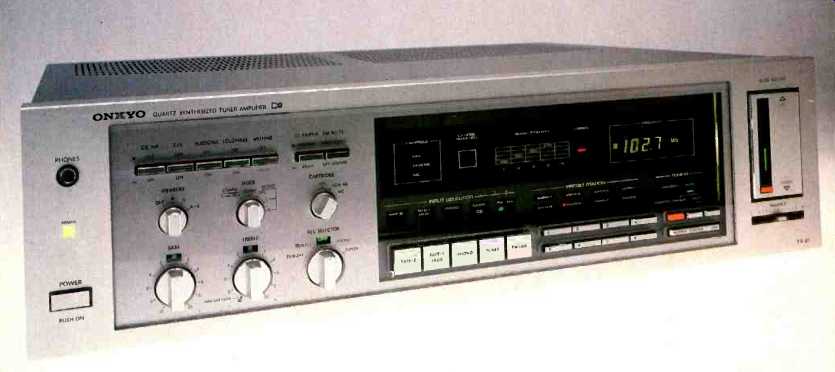
MANUFACTURER'S SPECIFICATIONS:
FM Tuner Section:
Usable Sensitivity: Mono, 10.3 dBf; stereo, 17.2 dBf.
Fifty-dB Quieting Sensitivity: Mono, 14.7 dBf; stereo, 37.2 dBf.
S/N: Mono, 75 dB; stereo, 70 dB.
Stereo Separation: 40 dB at 1 kHz; 33 dB from 100 Hz to 10 kHz.
Alternate Channel Selectivity: 70 dB.
Capture Ratio: 1.3 dB.
AM Suppression: 55 dB.
Image Rejection: 80 dB.
I.f. Rejection: 90 dB.
Spurious Rejection: 90 dB.
THD: Mono. 0.12%; stereo, 0.2%.
Frequency Response: 30 Hz to 15 kHz, within 1.5 dB.
Stereo Threshold: 17.2 dBf.
Muting Threshold: 17.2 dBf.
AM Tuner Section:
Usable Sensitivity: 30 µV.
Image Rejection: 40 dB.
I.f. Rejection: 30 dB.
S/N: 40 dB.
THD: 0.8%.
Amplifier Section:
Power Output: 60 watts per channel, 8 ohms, both channels driven, 20 Hz to 20 kHz.
Rated THD: 0.025%.
SMPTE IM: 0.025%.
Damping Factor: 50 at 8 ohms.
Frequency Response: High level, 20 Hz to 30 kHz, within 1.0 dB; phono, RIAA ±0.5 dB.
Sensitivity for Rated Output: High level, 150 mV; MM phono, 2.5 mV;
MC phono, 350 µV.
Phono Overload: 200 mV.
S/N: High level, 80 dB; MM phono, 76 dB.
Tone Control Range: Bass, ± 12 dB at 100 Hz: treble, ± 10 dB at 10 kHz.
Subsonic Filter: 15-Hz cutoff, 6 dB/ octave.
Loudness, -30 dB: +9 dB at 40 Hz, +5 dB at 20 kHz.
General Specifications:
Power Requirements: 120 V a.c., 60 Hz.
Dimensions: 19-11/16 in. (500 cm) W x 5-9/16 in. (141 cm) H x 17 3/4 in. (450 cm) D.
Weight: 28.6 lbs. (13 kg).
Price: $540.00.
Company Address: 200 Williams Dr., Ramsey, N.J. 07446.

Onkyo's top-of-the-line TX-61 stereo receiver deserves the alternate description which the company prefers to use, a tuner-amplifier. Indeed, this receiver offers so many control features, both internally and externally, that few separate tuner and amplifier combinations could compete with it on that basis. There is, for example, the built-in CX decoder which allows you to play CX records without having to hook in a separate CX decoder. The CX discs (an invention of the CBS Technology Center and CBS Records) offer as much as 20 dB of signal-to-noise improvement over conventional analog records and noticeably improved dynamic range in reproduced music.
As is true of most recent receivers, the tuner section uses frequency-synthesized tuning and incorporates eight FM and eight AM station presets which can be directly accessed at the push of a button. This receiver has provision for connection of an extra signal-processing system in addition to being able to connect up to two tape decks with tape monitoring facilities. A record selector function permits you to listen to another source while dubbing tapes or recording from phono.
The front panel of the Onkyo TX-61 is so "busy" and crammed with controls, switches and indicators that we'd better get right to its description. At the extreme left are the usual power switch and associated indicator light. Moving across the bottom section of the panel, to the right, are rotary bass, treble and record-selector controls. Tiny windows above each of these controls inform the user as to degree of tone-control compensation and the status of the record selector, using clever, easy-to-understand pictographs in the case of the record selector. Small switches for speaker selection, mode, and cartridge selection are found above the larger tone- and record-selector controls. This receiver not only accommodates both moving-magnet and moving-coil cartridges directly but, recognizing the fact that some recent MC pickups produce output levels that are almost as great as those typically obtained from MM cartridges, provides two switch positions for MC pickups. One has a sensitivity of 350 µV for rated output, while the other reduces the gain of the input until it is nearly the same as for MM cartridges while maintaining a proper, lower loading impedance for MC pickups.
Secondary-function pushbutton switches are located at the top right of the panel, and include switches for such functions as CX noise-reduction (decoder) on/off, preamp out/main amp in (for extra signal-processing device connection), loudness control on/off, and audio muting. Slightly separated from these switches are a 25/75 µS FM de-emphasis switch (for the few FM stations that are still broad casting Dolby B) and an FM mute/stereo on/off switch.
Near panel center are five program-source buttons. The tuner button is augmented by an AM/FM button. Indicator lights tell the user what's been selected. Nearby are the eight preset keys and their indicator lights, while still further to the right are a memory key and its indicator (for programming favorite station frequencies), auto- and manual-tuning selector buttons and a rocker-bar manual-tuning switch for up- or down-scale tuning. A balance-control slider is located at the lower right corner of the front panel.
Just above the balance control is a unique, multiple- function volume control arrangement. A large pad surrounds a fluorescent indicator resembling a vertical thermometer bar. When the upper part of this pad is depressed, sound volume increases slowly, and relative volume is indicated on the thermometer-like indicator. Pressing the bottom section of the pad reverses the process. Pressing a smaller pushbutton, just below the indicator bar, causes volume to fade slowly even when you let go. If nothing further is done, volume will fade to zero. If, however, you touch any portion of the larger pad while this fade is taking place, volume will stabilize wherever it was when you touched the larger pad. Pretty elaborate, I must say. I'm not exactly sure what advantages this complex volume control arrangement offers compared to the good of big rotary knob, but it sure was fun to sit there and watch that indicator rise and fall all by itself as I kept adjusting the volume levels up and down! A signal-strength meter in the form of LEDs arranged in a sort of bar graph is located at the upper center of the panel, as are the usual stereo indicator LED and the digital station-frequency readout. The familiar phone jack at the upper left corner of the front panel completes this rather elaborate layout.
The rear panel of the Onkyo TX-61 is equipped with the usual array of FM and AM antenna terminals (both 75- and 300-ohm connection points are provided), a ground terminal, CX adjustment controls, an indicator light (used during the adjustment process), and the usual input and output jacks. A rotatable AM loop antenna, rather than the usual bar or loopstick, is provided as well. Two sets of speakers can be connected to the receiver via easy-to-use, color-coded screw terminals. Two a.c. receptacles (one unswitched and one switched) are located just below the speaker terminals.
I was rather surprised to find that there are no auxiliary, high-level inputs on this otherwise thoughtfully designed receiver. If you want to connect any additional high-level program source, such as the stereo audio outputs of a VCR or videodisc player, or even the audio outputs of soon-to-be-available compact digital disc players, you must use one of the two tape-monitor input pairs. But this, of course, rules out the ability to dub from tape deck to tape deck without having to go 'round to the back of the receiver each time and change the cable connections. What it would have taken to avoid this, of course, would be another program source button on the front panel and an extra pair of jacks at the rear.
Circuit boards within the chassis of the TX-61 (I counted a dozen of them, but may have missed a few small ones) are neatly arranged. Although parts density is fairly great, the layout seemed safe and not likely to generate thermal problems, potential shorts or other mishaps which could result in the need for frequent servicing. From the back of the owner's manual I learned that the receiver utilizes six FETs, 56 transistors, 23 ICs and 102 diodes. I've always wondered what possible use the consumer will make of this information, and why some manufacturers publish this data in owner's manuals. Perhaps it's a throwback to the good old days of vacuum tubes, when the number of tubes in a "radio" had some small bearing on the product's quality.
In terms of actual circuit features, there isn't much I can tell you other than the fact that Onkyo uses their Super Servo amplifier circuitry (other companies call it by other names) which, as I recall, is a low overall feedback loop in the power amplifier section plus a parallel higher feedback loop, operative only at subsonic frequencies, for improved bass damping factors and improved d.c. stability. Another feature of the amp section is called "linear switching" which, I suspect, means the avoidance of Class-B or Class-AB switching and notch distortion. Again, we've all seen variations on this theme from a number of companies. I'm certainly not criticizing these circuit refinements, for they all contribute in some small way towards better sound at all listening levels. I simply don't want you to get the idea that Onkyo (or any other receiver manufacturer) has an exclusive on these refinements.
FM Measurements
Usable FM sensitivity in mono measured a satisfactory 11.2 dBf (2.0 µV across 300 ohms). Stereo usable sensitivity was 18 dBf, just slightly above the stereo switching thresh old, which is the way good FM stereo tuners should be designed. Fifty-dB quieting required signal levels of only 15 dBf in mono; this quieting point was reached with signal inputs of 36 dBf in stereo. With strong signals, quieting approached 80 dB in mono and 74 dB in stereo. Quieting curves and distortion versus signal strength for a 1-kHz modulating signal are shown in the graphs of Fig. 1. Strong-signal THD in mono decreased to a level of 0.08%, well below the claimed 0.12%. In stereo, THD measured 0.13%, also well below the published figure of 0.2%.

Fig. 1--Mono and stereo quieting and distortion characteristics, FM section.

Fig. 2--Frequency response (upper trace) and separation.
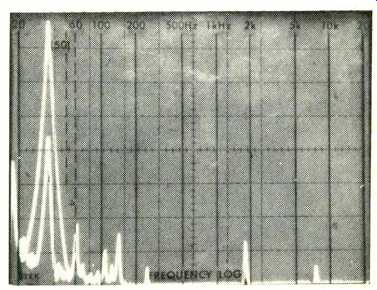
Fig. 3--Separation and crosstalk components at 5 kHz, FM section.
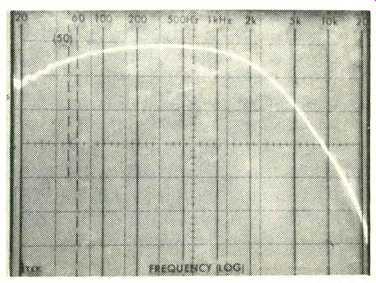
Fig. 4--Frequency response, AM tuner.
Figure 2 is a 'scope photo of a spectrum analysis sweep from 20 Hz to 20 kHz, with the upper trace representing the frequency response at the output of the modulated left channel and the lower trace showing the crosstalk output from the opposite, unmodulated channel. I measured separations of 45.5 dB at 1 kHz, 49 dB at 100 Hz, and just under 30 dB at 10 kHz. (Vertical sensitivity of this, and all other 'scope displays of this type in this report, is 10 dB per division.) In Fig. 3 I applied a fixed 5-kHz signal to the left-channel input of the FM signal generator at 100% modulation. The tall spike at the left represents the desired output signal. A second sweep was then made, with the analyzer connected to the output of the unmodulated channel. The shorter spike, which appears to be nestled inside the taller one, therefore represents the 5-kHz crosstalk, while other components at higher frequencies represent distortion, subcarrier and other crosstalk products. In this display, the frequency sweep is linear, rather than logarithmic, and extends from d.c. to 50 kHz, at 5 kHz per linear horizontal division.
Capture ratio measured slightly better than the 1.3 dB claimed; alternate-channel selectivity was 73 dB, also somewhat better than the published specs. Spurious and i.f. rejection both met spec at 90 dB, while image rejection was a bit better than claimed, measuring 82 dB. I measured AM suppression at its rated 55 dB. While Onkyo quotes only one harmonic distortion figure for mono and stereo (I presume the figure applies to a 1-kHz modulating signal), IHF tuner measurement standards require that distortion be quoted at three frequencies: 100 Hz, 1 kHz and 6 kHz. At the 100-Hz and 6-kHz test frequencies, I measured harmonic distortion levels of 0.047% and 0.03% in mono and 0.23% and 0.18% in stereo, respectively.
Figure 4 is a plot of frequency response for the AM section of the receiver. As is unfortunately true of so many "high fidelity" stereo receivers, not too much attention has been paid to the AM circuitry, so I didn't bother with it either, after seeing this response curve.
Power Amplifier and Preamplifier Measurements
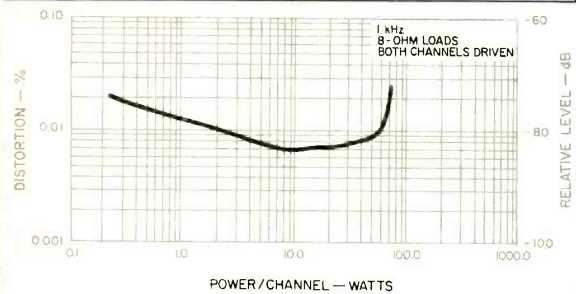
Fig. 5--Power output vs. THD.
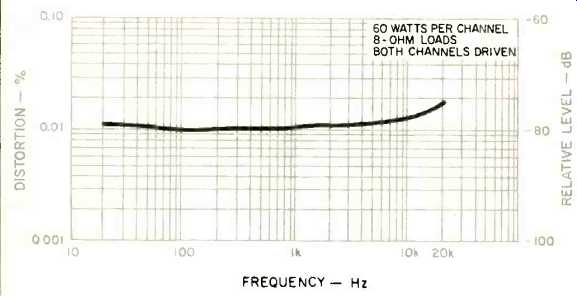
Fig. 6--Amplifier distortion vs. frequency.
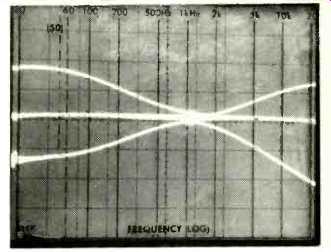
Fig. 7--Tone control boost and cut range.
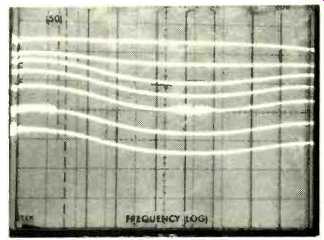
Fig. 8--Loudness compensation characteristics.
The power amplifier section of the Onkyo TX-61 receiver delivered 72.6 watts of power per channel at mid-frequencies for its rated distortion of 0.025%. At 20 Hz, 67 watts per channel was available at rated THD. At 20 kHz, the amplifier exceeded its published power ratings of 60 watts per channel by just over 10 watts, delivering 70.8 watts per channel for rated THD. Figure 5 is a graphic plot of distortion versus power output, using 8-ohm loads with a 1-kHz test signal. Figure 6 shows how distortion at rated output varies with frequency. In fact, the total harmonic distortion level remained extremely constant at all test frequencies, which speaks well for the overall design of this power amplifier section. I normally expect to see distortion rising at the frequency extremes in this kind of plot.
Damping factor at 50 Hz measured exactly 50, as claimed. Dynamic headroom was 1.4 dB above continuous rated power output. The SMPTE-IM distortion was a bit poorer than claimed, measuring 0.03% at rated output but quickly decreasing to rated levels of 0.025% or lower when output levels were decreased to 50 watts per channel or lower. Power bandwidth extended from 12 Hz to 35 kHz for rated output at no more than rated THD. The figure for CCIF IM (twin-tone method of measurement) was 0.0073%, while IHF-IM distortion, which also uses twin tones separated by 1 kHz, measured 0.022% at rated output.
Figure 7 is a plot of the maximum boost and cut characteristics of the bass and treble tone controls of the TX-61. Turnover frequency seemed to be set a bit higher than normal, at around 1.3 to 1.5 kHz; this may not suit the tastes of some listeners who prefer the bass and treble turnover point to be set closer to around 500 Hz. Figure 8 is a plot of the loudness compensation characteristics when the loudness switch is activated. Onkyo chose to boost both bass and treble in their loudness circuit, though treble boost is clearly not as great as the bass boost.
Input sensitivities of the high-level and phono inputs, as measured in accordance with the new IHF/EIA standards, will not agree with Onkyo's published sensitivity figures, since the measured results in the lab are referred to 1-watt output while the Onkyo specs are referred to rated output. If you are not handy with log and dB tables, you can simply multiply my results by a factor of 7.75 to see how close this unit came to Onkyo's published sensitivity figures. In any event, I measured a phono-input sensitivity for the MM input of 0.3 mV for 1-watt output. In the high-gain MC mode, sensitivity was 0.04 mV for the same 1-watt output level. High-level inputs (tape 1 or 2) required an input of 20 mV to deliver 1 watt into 8-ohm loads at the output terminals. Phono overload measured 220 mV for the MM phono mode and 37 mV when the switch was thrown to the high-gain MC mode.
In quoting signal-to-noise ratios, Onkyo did elect to use the newer measurement approach, so the figures I measured lend themselves to direct comparison with Onkyo's published specifications. I measured a signal-to-noise ratio of 78 dB in MM phono, 68 dB in MC phono, and 83 dB for the high-level inputs. All of these results are better than the published claims.
Phono equalization was very accurate from 1 kHz all the way out to 20 kHz, with deviations never exceeding 0.1 dB. At the bass end, however, I noted a rising characteristic, so that deviation was a full 1.5 dB from the standard RIAA curve at 30 Hz. I would recommend using the subsonic filter when playing records through the preamp section as a matter of practice. Even if your turntable has great, low rumble specs, warped records can still deliver damaging subsonic signals to your speakers. This being the case, I found that with the subsonic filter activated, RIAA deviation was partially corrected and amounted to no more than an error of 0.5 dB at 30 Hz.
Use and Listening Tests
Once you familiarize yourself with that elaborate front panel (the LED pictographs actually do help), the Onkyo TX-61 proves to be a very "friendly" receiver to use. Tuning of FM and AM stations is easy and extremely accurate. Batteries, to be implanted beneath the surface of the unit (and supplied in the carton so you don't have to rush out and buy them as you do with so many products these days), pre serve the memorized preset frequencies even if the set is unplugged or there is a temporary power outage. The tuner section was certainly as sensitive as some of the better, separate FM tuners that have passed through my lab in recent months. On some of the more troublesome signals in my area, I would have wished for a bit higher AM suppression, but a good, properly oriented antenna tied to the receiver should eliminate all but the trickiest multipath and interference problems.
The amp and preamp sections behaved well, both in bench testing and during phono and tape listening tests. For high-level source tests, I used a compact digital disc player, having found that listening to true digital compact discs is a great way to separate sonic software problems from sonic equipment problems. These discs also put amplifiers to a real test with respect to dynamic range and available headroom. The amp section of this receiver did relatively well in these tests though, of course, 60 watts, while adequate for most program source material currently available, cannot be expected to drive low-efficiency speaker systems to the peaks demanded by wide dynamic-range digital discs.
I have always had a high regard for Onkyo's audio products and living with their latest receiver has not altered my opinion. The CX decoder worked as well as any separate CX decoder I have checked and was easy enough to calibrate. Using the standard CX calibration, record, the whole process takes only about a minute and requires no test equipment. What we all need, of course, are more CX records to make this feature more worthwhile, but that is neither Onkyo's nor my problem. I would suggest that if this kind of receiver appeals to you, you would do well to spend an hour or so with it at an Onkyo dealer. This is the kind of product that requires some hands-on auditioning and control manipulation. No amount of third-person praise such as mine can give you the required feel for this unit; it's definitely worth checking out if an all-in-one stereo receiver is what you want for your home audio system.
-Leonard Feldman
-----------
(Audio magazine, Feb. 1983)
Also see:
Onkyo Model TX-2500-II AM/FM Stereo Receiver (Equip. Profile, Feb. 1979)
Onkyo T-9090II FM Tuner (Jul. 1988)
Onkyo Model A-7 Integrated Amplifier (Jan. 1978)
Onkyo DX-G10 Compact Disc Player (Mar. 1989)
= = = =